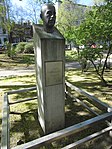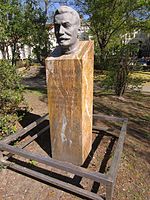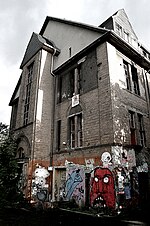St. Michael's Church, Berlin
1851 establishments in Germany1851 establishments in Prussia19th-century Roman Catholic church buildings in Germany2003 disestablishments in GermanyChristian organizations disestablished in 2003 ... and 3 more
Historicist architecture in GermanyRoman Catholic churches completed in 1851Roman Catholic churches in Berlin

Saint Michael's (German: Sankt-Michael-Kirche) is a former Roman Catholic parish in Berlin, Germany, dedicated to the Archangel Michael. It is noted for its historic church in Mitte (former Luisenstadt), near the border between Berlin-Mitte locality and Kreuzberg. The church was built between 1851 and 1861, and also served as a garrison church for Catholic soldiers. It was heavily damaged by bombing during the Second World War and partially reconstructed in the 1950s. It is protected as a historical monument in Berlin.
Excerpt from the Wikipedia article St. Michael's Church, Berlin (License: CC BY-SA 3.0, Authors, Images).St. Michael's Church, Berlin
Engeldamm, Berlin Mitte
Geographical coordinates (GPS) Address External links Nearby Places Show on map
Geographical coordinates (GPS)
| Latitude | Longitude |
|---|---|
| N 52.5072222222 ° | E 13.4194444444 ° |
Address
Sankt Michael
Engeldamm 28
10179 Berlin, Mitte
Germany
Open on Google Maps









